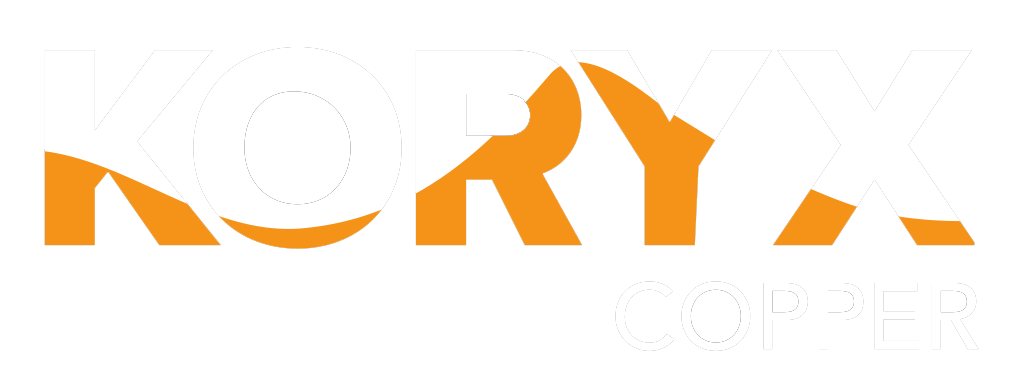Significant copper and molybdenum intersections include:
- HM11 : 0.62% CuEq over 10 metres, including 4 metres @ 0.97% CuEq
- HM11 : 0.46% CuEq over 26.36 metres including 4m @ 0.76% CuEq
- HM12: 0.76% CuEq over 20 metres including 4m @ 2.57% CuEq
- HM14 : 0.35% CuEq over 30 metres from surface and 0.48% CuEq over 26 metres
- HM22 : 0.63% CuEq over 50 metres including 0.80% CuEq over 16.00 metres
- HM26 : 0.37% CuEq over 16 metres from 26 metres below surface
Vancouver, B.C., Canada – August 3, 2023 – Deep-South Resources Inc. (“Deep-South” or “the Company“) (TSX-V: DSM) announces the fourth batch of assay results from its drilling program interrupted in June 2021 at its Haib Copper project in southern Namibia. The program was interrupted when the Ministry of Mines and Energy of Namibia had denied the renewal of the Haib Copper licence EPL 3140. Results from 13 drill holes have been received in full after the renewal denial of the licence, with partial results received for 1 drill hole. The first 6 drill holes were previously reported. Following the completion of QA/QC the results for the remaining 7 holes are disclosed here.
Pierre Léveillé, President & CEO of Deep-South stated that: “We are extremely enthusiastic by the results from the drill program. Previous drilling programmes point to the presence of higher copper grade zones, probably associated with near vertical structures (shears and faults) within the broader mineralised areas of the project. The use of vertical drilling in the past potentially missed those structures resulting in an underestimation of the overall grade. Our drilling program is focussing to redress this through the use of inclined holes to identify and delineate these structures and test the association with higher Cu grade zones. These results seem to support this updated interpretation, showing substantial intersections at Cu grades considered high for Haib. Additionally the presence of molydenum has been confirmed with high Mo grades obtained in association with structures and alterations”.
The 7 holes for which assay results are reported here cover some 1,360.92 metres and cover all 4 of the target areas. All holes were positioned to better delineate the previously identified higher grade portions of the Haib Copper Project and to test the extension of grade between these targets. Assay results of significant intersections are tabulated below:
[table id=23 /]
Borehole Locations (Figure 1)
HM05 was drilled northeastwards in the Pit 2 target area to determine the southwestern limit of the 0.3% Cu contour.
HM11 was drilled towards the southwest in the Pit 3 target area to determine the northern limit of the high-grade (>0.4% Cu) mineralization previously identified here.
HM12 was drilled northwards in Pit 3 to better delineate the southern limit of the high grade mineralisation identified here by reducing the drillhole spacing.
HM13 was positioned in Pit 3 and drilled approximately northwards. The mineralization in Pit 3 is believed to terminate against an east-west trending, near vertical shear zone in the north and HM13 was planned to test this.
HM14 was placed between the Pit 4 and Pit 2 areas. Cu Mineralisation in Pit 4 is believed to be associated with east-west oriented, near vertical structures and this borehole was positioned to test this model and the potential extension of higher grades between the two target areas.
HM22 was drilled vertically in Pit 1 to delineate the southern limit of the higher-grade mineralization here. Additionally, the hole was drilled to over 400m from surface to test the depth to which this mineralisation extends.
HM26 was drilled in the northwest of the Pit 4 target area to test the presence of near-surface mineralisation as well as the northern limit of this mineralisation.
Discussion of Pertinent Results
HM27
This shows relatively high-grade mineralisation (0.47% Cu) from surface to about 14m down-the-hole, correlating with significant malachite staining seen on a small hillock to the north of the borehole. These combined with results previously reported for HM02 and HM03 located east of HM27, point to higher grade mineralisation being associated with at least 2 near vertical structures with widths >40m.
HM28
This hole was drilled through the high-grade mineralisation in the Pit 3 area returning 64m at 0.61% CuEq (0.60% Cu) including 16m at 0.79% CuEq. This high-grade mineralisation was shown to be some 40m closer to surface than expected.
HM29
This had been placed to test the extension of mineralisation between the Pit 1 and Pit 2 target areas. Cu grades in HM29 are maintained at over 0.3% from surface for approximately 100m below topography demonstrating that the >0.3% mineralisation extends over 150m between Pit 1 and Pit 2.
HM30
Grades returned for HM30 were lower than expected. This resulted in the interpreted position of the 0.3% Cu contour being shifted laterally westwards by some 40m with an associated drop in the tonnage of material above this grade.
HM31R
The results show that not only was this hole drilled wholly within the 0.3% Cu contour as expected, but that the existing 0.4% Cu contour extends laterally for some 50m more than expected.
Drilling Program Update
Twenty-two holes were completed in 2021 and by the time the licence renewal was declined in June 2021, samples for 19 holes had been submitted to the laboratory. Results for eight holes were disclosed in May and June 2021, 6 holes were recently disclosed while the remaining 6 holes are disclosed here. The program was planned for 10,000 metres, of which 4,800 meters was completed in 2021. The remaining 5,200 metres will be completed as part of the development program to be resume as soon as possible. At 1.8 billion years (Archean), the Haib Copper Deposit is one of the oldest deposits in the world. Over time, it has seen several transformations including shearing and faulting events that have further concentrated Cu and Mo.
The specific focus of this drilling campaign is to further delineate and grow the higher-grade area(s) of the Haib deposit uncovered by Deep-South in 2019 and 2020
with the ultimate goal of establishing a measured resource over that higher-grade section of the deposit.
Quality Control
All drill cores were logged, photographed, and cut in half with a diamond saw. Half of the cores were bagged and sent to ALS Laboratories Ltd. in Johannesburg, South Africa for analysis (SANAS Accredited Testing Laboratory, No. T0387), while the other half was quartered with one quarter archived and stored on site for verification and reference purposes while the other quarter will be used for metallurgical test work. 33 elements are analyzed by Induced Coupled Plasma (ICP) utilizing a 4-acid digestion and gold is assayed using a 30g fire assay method. Duplicate samples, blanks, and certified standards are included with every batch and are actively used to ensure proper quality assurance and quality control.
About the Haib Copper Project
The Haib Copper Deposit is a large copper/molybdenum deposit situated 40 kilometers from the southern boundary of Namibia. The license covers 370 square kilometers (37,000 hectares). Over the years the project has seen 70,000 meters of drilling, several metallurgical test work programmes, geophysical surveys, geological mapping, mine modeling and even a feasibility study in 1996. Deep-South holds all the historical data.
Please note that: Mineral Resources that are not mineral reserves do not have demonstrated economic viability. Mineral resource estimates do not account for mineability, selectivity, mining loss and dilution. These mineral resource estimates are based on Indicated Mineral Resources that are considered too speculative geologically to have the economic considerations applied to them that would enable them to be categorized as mineral reserves. However, there is no certainty that these indicated mineral resources will be converted to measured categories through further drilling, or into mineral reserves, once economic considerations are applied. There is no certainty that the preliminary economic assessment will be realized.
Qualified Person
Mr. Dean Richards Pr.Sci.Nat. , MGSSA – BSc. (Hons.) Geology, is the Qualified Person for the Haib Project as defined by National Instrument 43-101 and has approved the technical disclosure contained in this news release.
About Deep-South Resources Inc.
Deep-South Resources is a mineral exploration and development company. Deep-South’s growth strategy is to focus on the exploration and development of quality assets in significant mineralized trends and in proximity to infrastructure in stable countries. The Company holds the Haib Copper Project in Namibia and holds an interest in three exploration licences in the Copperbelt in Zambia. In using and assessing environmentally friendly technologies in the development of its copper projects, Deep-South embraces the green revolution.
Neither the TSX Venture Exchange nor its Regulation Services Provider (as that term is defined in the policies of the TSX Venture Exchange) accepts responsibility for the adequacy or accuracy of this release.
This press release contains certain “forward-looking statements,” as identified in Deep- South’s periodic filings with Canadian Securities Regulators that involve a number of risks and uncertainties.
There can be no assurance that such statementsl prove to be accurate and actual results and future events could differ materially from those anticipated in such statements.
This News Release contains forward-looking statements, which relate to future events. In some cases, you can identify forward-looking statements by terminology such as “will”, “may”, “should”, “expects”, “plans”, or “anticipates” or the negative of these terms or other comparable terminology. All statements included herein, other than statements of historical fact, are forward looking statements, including but not limited to the Company’s plans regarding the Haib Copper project. These statements are only predictions and involve known and unknown risks, uncertainties and other factors that may cause the Company’s actual results, level of activity, performance or achievements to be materially different from any future results, levels of activity, performance, or achievements expressed or implied by these forward-looking-statements. Such uncertainties and risks may include, among others, actual results of the Company’s exploration activities being different than those expected by management, delays in obtaining or failure to obtain required government or other regulatory approvals or financing, inability to procure equipment and supplies in sufficient quantities and on a timely basis, equipment breakdown and bad weather. While these forward-looking statements, and any assumptions upon which they are based, are made in good faith and reflect the Company’s current judgment regarding the direction of its business, actual results will almost always vary, sometimes materially, from any estimates, predictions, projections, assumptions or other future performance suggestions herein. Except as required by applicable law, the Company does not intend to update any forward-looking statements to conform these statements to actual results.
More information is available by contacting Pierre Léveillé, President & CEO at
+1-819-340-0140 or at: info@koryxcopper.com or
Paradox Public Relations at +1-514-341-0408.


